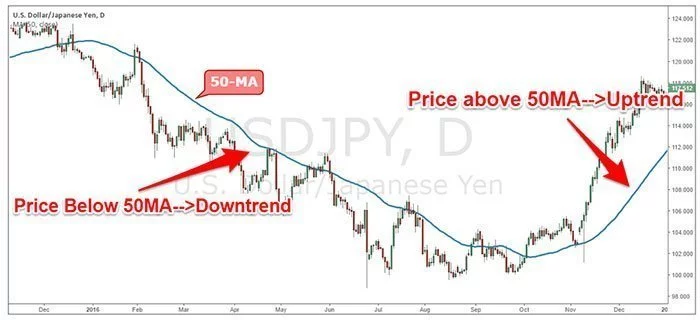-
Best Forex Brokers
Our top-rated Forex brokers
-
Islamic Account Brokers
Best accounts for Muslim traders
-
Brokers for Beginners
Start trading here
-
Forex Demo Accounts
Learn to trade with no risk
-
No-deposit Bonuses
Live trading with no deposit
-
ECN Brokers
Trade with Direct Market Access
-
Lowest Spread Brokers
Raw spreads & low commissions
-
High Leverage Brokers
Extend your buying power
-
Market Maker Brokers
Fixed spreads & instant execution
-
MetaTrader 4 Brokers
Top MT4 brokers in Malaysia
-
MetaTrader 5 Brokers
Top MT5 brokers in Malaysia
-
TradingView Brokers
Top TradingView brokers
-
cTrader Brokers
Top cTrader brokers in Malaysia
-
Forex Trading Apps
Trade on the go from your phone
-
Copytrading Brokers
Copy professional traders
-
All Trading Platforms
Find a platform that works for you
People who want to invest in the Forex market often wonder where to begin. The more important question should be – where do you want to end up and what is the best strategy to get there. If you are new to trading, it is better to go over the fundamental principles of Forex trading before setting up a trading strategy.
If you’re thinking short-term investing, one option would be to go low risk to preserve the value of your investment. However, with this strategy don’t expect huge returns. Long-term investing can be more rewarding, but it also requires more patience. Ultimately, a trader needs to find an investment strategy that fits their personality and investment goals.
What is Investment Strategy?
An investment strategy is a detailed plan for trading. A trading strategy like a recipe which has many ingredients. Each of the “ingredients” that make up your investment strategy will help you determine:
- What currency pair to trade
- When to buy/sell
- Entry and exit techniques
- Portion size
- What type of analysis you prefer: technical analysis or fundamental analysis;
- Money Management
Guidelines are important in defining your trading philosophy. The more detail your investment strategy covers, the better. However, do not overcomplicate the strategy and instead keep things simple.
The 3 Key Components of a Winning Strategy
There are three critical elements of a winning strategy that you can apply to any winning investment strategy, or you can structure your strategy based on these three key elements. These are the three essential pieces of the puzzle, shaping any successful trading plan.
Trade With the Trend
You must trade with the trend. Traders lose trades because everyone has a different idea of how to discern a trend.
The simplest and the most powerful way to determine the overall trend is by summing the 50-period moving average (50MA). Then ask yourself where the current price is compared to the 50MA. If the price is above the 50MA, we’re in an uptrend and you should be only looking for buy setups. If the price is below the 50MA, we’re in a downtrend, and a trader should only be looking for sell setups.

Bar Patterns – Breakouts
Bar patterns are distinct formations generated by the movement of price. Continuation breakouts and reversal breakouts are two clear patterns that are visible in the bar charts.
With time you’ll notice a tendency of currency pairs to exhibit specific patterns – patterns that are only known to you and that only you seek to profit from. Traders should be looking for price bar patterns in every configuration you plan to trade, regardless of the trading strategy.
Entry Techniques
Don’t just enter a trade at the market price; wait for confirmation and plan your entry. Leading vs lagging indicators are also to be considered in planning trades, as lagging indicators will only give historical data, whereas leading indicators like help us predict the market so we can execute trades should the market conditions we are expecting start to take form. There is a tendency for traders to rely on lagging indicators so a trade setup can never be confirmed.
A simple entry technique is to use a buffer between 5 to 15 pips above/below your initial entry price generated by your price bar pattern. This entry technique will help you to become more accurate and avoid being trapped by false breakouts. Traders can lose money, not because they have the wrong idea, but rather because their entry technique is faulty and they enter at the wrong time.
A second entry technique is to enter the market only during the major Forex sessions to avoid entering at a wrong time and get trapped in a ranging market with the currency pair going nowhere with no profitability.
Conclusion
It’s crucial that you develop an investment strategy that is right for you, and then rigorously implement that plan with the right mindset. Forex trading is a rule-based activity and only traders who adhere to rule-based trading will achieve consistent success.
We need to have rules that govern what we do and the decisions we make if we are to succeed. An investment strategy is nothing more than a compilation of your trading rules, and I firmly believe that trading rules are designed to protect you from yourself and to stop you from making accidentally bad decisions regularly.
References:
- Forex-foreteller: currency trend modelling using news articles – Fang Jin, et. al. – 2013.
- 7 Winning Strategies for Trading Forex (page 150) – Grace Cheng – 2007.
- High Probability Trading Strategies (page 5/6) – Robert C. Miner – 2009
Stay updated
This form has double opt in enabled. You will need to confirm your email address before being added to the list.




























